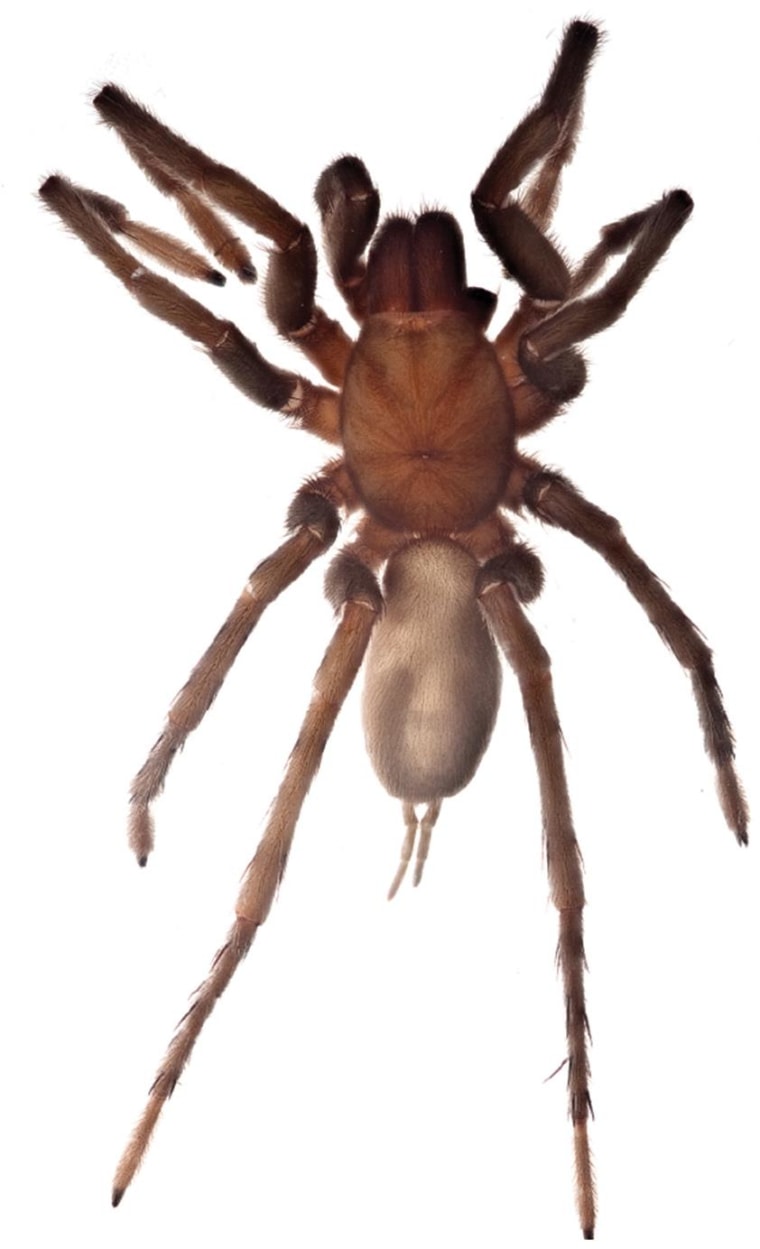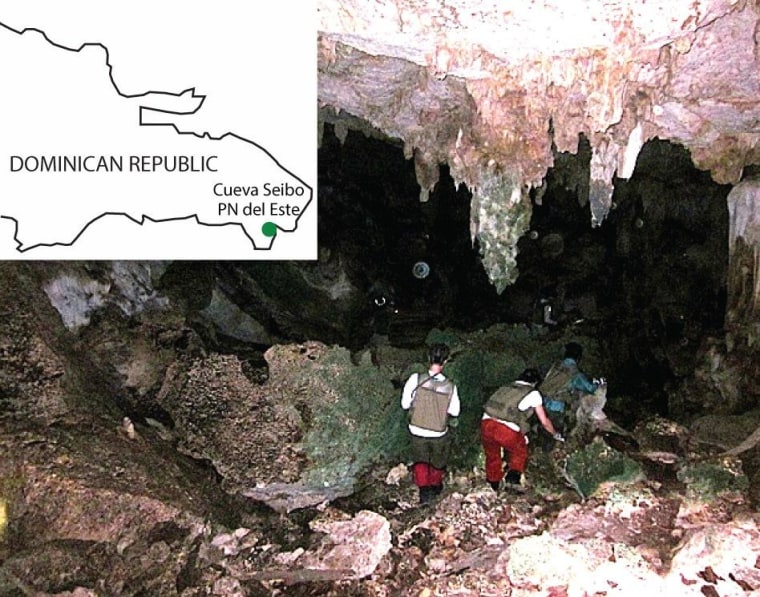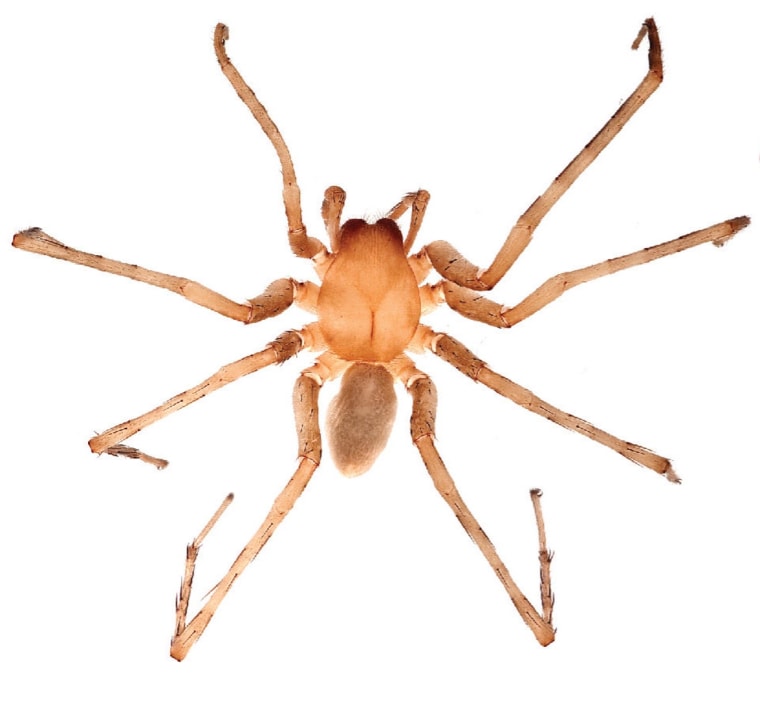Eyeless spiders don't sound like the sorts of things you'd want to seek out, but when you find them in the Dominican Republic — well, that's something to celebrate.
Two previously unknown species of blind cave spiders were discovered two years ago in Cueva Seibo, a cave in the Dominican Republic's Parque Nacional Del Este, or East National Park. They're described in a paper published online July 30 by the Journal of Arachnology, with Lewis and Clark College research assistant Trevor Bloom as the lead author.
The researchers say the two species, known as Ciba seibo (shown at top) and Trichopelma maddeni, are the first eyeless cave spiders to be discovered on the island of Hispaniola. This is also the first documented instance of two different species of blind spiders being discovered in a single cave, according to the American Arachnological Society.


There are about 1,000 described species of eyeless spiders around the world, but fewer than 30 of them have been discovered in caves in the tropics. Eyeless spiders rely on vibrations and chemical cues to find their prey. So if you ever find yourself in Cueva Seibo ... tread lightly.
IN-DEPTH
- All-New Family of Cave Spiders Found
- Bat-Eating Spiders Are Everywhere
- Spiders Pose as Bird Poop to Evade Predators
In addition to Bloom, the authors of "Discovery of Two New Species of Eyeless Spiders Within a Single Hispaniola Cave" include Greta Binford, Lauren Esposito, Giraldo Alayon Garcia, Ian Peterson, Alex Nishida, Katy Loubet-Senear and Ingi Agnarsson.
